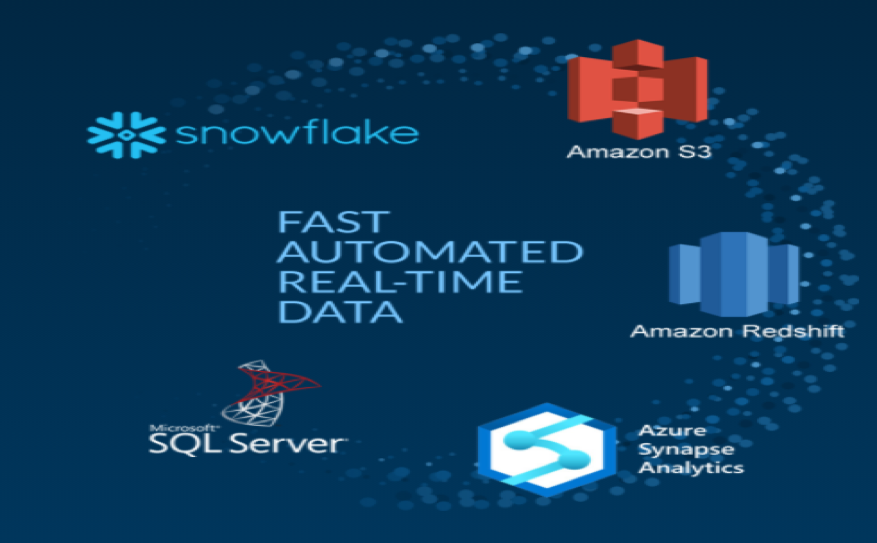The concept of data lake first emerged around a decade back and immediately took the business community by storm. A single repository of unstructured, semi-structured, and structured data was unheard of in those times. Even though organizations immediately wanted to take advantage and build their data lakes, generating data-driven insights from all the raw data was not easy and solutions tried at that time failed to give the desired results. Fast forward to modern times and you have the Snowflake Data Lake to garner all the advantages of a database management system.

But first, what is a Data Lake?
A Data Lake holds massive volumes of unstructured, semi-structured, and structured data in its original format. From its nascent stages, it has evolved to meet the needs of the modern business environment and can be operated with all the common SQL tools. Data access is quick and analytics can be run efficiently as all storage objects and computing resources are internal in the modern data lake platform. Legacy architecture, on the other hand, had all the data stored in external buckets and needed to be copied to another repository of compute-storage resources for analytics, thereby affecting the whole performance.
Modern cloud data lake architecture
Modern data lake architecture based in a cloud such as Snowflake Data Lake enables businesses to maintain workload isolation. It means that to prevent activities from slowing down, a data lake isolates workloads and allocates optimized resources to the most critical jobs. This is particularly useful when organizations have a sudden spike in demand for computing or storage resources.
A cloud-based data lake architecture has speed and flexibility and the following characteristics.
- Multiple users can be added without any drop in performance.
- Loading and data queries can be simultaneously carried out with the right tools without performance degradation.
- A strong metadata service that meets the specific needs of the object storage environment.
- Shared-data and multi-cluster architecture
- Scaling of computing and storage resources independent of each other.
Incidentally, as will be seen now, these are some of the inherent features of Snowflake Data Lake.
Snowflake Data Lake
Snowflake has optimized the Data Lake architecture through a cloud-based multi-cluster platform that fulfills the dream of businesses for a high-performing platform to implement a single source for data analytics. Top enterprises around the world are using Snowflake Data Lake to meet their business requirements. Here are a few reasons why Snowflake is the ideal cloud-based data lake for the current business ecosystem.
- Immediate elasticity – Any size of computing resources can be allotted to a user or workload without limitations. The sizes can be changed in real-time dynamically as the compute engine scales out automatically without affecting running queriesduring times of heavy concurrency.
- Multiple users – You can deploy multiple users to work simultaneously on multiple queries or as many workloads as needed without adversely impacting the performance.
- No silos – The Snowflake Data Lake platform can quite easily and natively ingest massive volumes of structured and unstructured data like JSON, CSV, tables, Parquet, and ORC.
- Monitoring – The structure of the data lake enables strict control to get all the benefits expected from a cloud-based platform.
- Affordable storage – Payment is only for the baseline price charged by the Snowflake cloud storage providers – AWS S3, Microsoft Azure, and Google Cloud Platform. Users can scale up and down in the usage of compute resources and pay only for the quantum utilized.
- Consistency in transactions – Snowflake enables easy combining and moving of data, thereby assuring consistency in multi-statement transactions with cross-database joins.
- Managed service – Snowflake tracks and monitors complete data management including data protection, data security, performance tuning, and more, allowing business owners to focus on their core business activities.
Summing up the features of Snowflake Data Lake, it is seen that there are multiple benefits of moving to the platform. You get cloud scaling, unlimited storage capacity, convenience, and affordable storage pricing so critical for a data lake as well as performance, security, and control that is essential for a data warehouse. Snowflake is built on the latest technologies and not a rehash of previous on-premises systems.
Snowflake Data Lake has radically changed the concept of a data lake architecture from the past where there were existing separate systems comprising of data marts, data lakes, and legacy data warehouses. This platform has altered the landscape of data engineering by doing away with the need to develop, deploy, and maintain different data systems separately. Now, for the first time in the history of data lakes, there is a single enterprise cloud data platform that can easily manage all formats of data as well as tables and JSON in a holistic way.
Finally, Snowflake has extendable data architecture. In a single data cloud ecosystem, you will get the seamless movement of data ranging from raw to modeled to consumption. Data can be generated through Kafka and put in a cloud bucket from where a transformation engine such as Apache Spark converts the data into a columnar format like Parquet. From here the data is persisted into a conformed data zone. Hence, businesses now do not have to decide between having a data warehouse or a data lake.

